![]()
[ web site index ]
| Stoke-on-Trent |
|
| | Tunstall | Burslem | Hanley | Stoke | Fenton | Longton | Six Towns | | |
|
[ web site index ] |
|
What was new in 2008?
this shows significant sections added during 2008 see current 'What's New?' |
| also see what was new in: 2000 | 2001 | 2002 | 2003 | 2004 | 2005 | 2006 | 2007
 21 December 2008 |
Completion
of the route of the Potteries Loop Line "All my early childhood in north Staffordshire, from four to 12, I travelled every day to school on a funny little LMS puffer on the so-called Loop Line, which went through the various Potteries towns and deposited me at Stoke. Like the 19th century which gave it birth, it promoted civilisation, manners and prosperity." Paul Johnson |
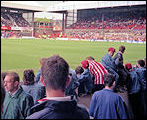 29 November 2008 |
"I sit here writing, basking in the glow of yet another Stoke City victory over the Baggies of West Bromwich, leaving Stoke sitting nicely in mid-table of the Premiership. And it isn’t even Christmas yet." [for Trevor Proudlove, 29th November 1943-13th December 2007] |
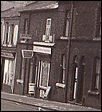 28 November 2008 |
Alan Chell's memories of Cobridge "How often have you
heard the saying, “Those were the days”? As I am the type of person who is
likely to make such a remark, I suppose I would be called “the older
generation”.
|
 27 November 2008 |
Tunstall on the Loop Line On the loop line between Pitts Hill and Burslem was the station at Tunstall and two junctions - the Newfield Junction and the busy Pinnox Junction. |
 24 November 2008 |
A Grand Tour of
the potteries This section of the Potteries web site is based on a unique collection of the drawings which Neville Malkin published in the Evening Sentinel between March 1974 and August 1976. In that time he drew a wide variety of the buildings of the Potteries. Pages will be added weekly over a two year period and this section will eventually contain 110 of them together with the original text and new photographs and background information where available. |
 19 November 2008 |
Arnold Machin
(born in Stoke-on-Trent) is renowned
for the creation of the British postage stamp portrait of Her Majesty Queen
Elizabeth II. He made national news in 1956 when he chained himself to a gas lamp at the Villas. |
|
17 November 2008 |
Goldenhill & Pits Hill On the loop line between Tunstall and Kidsgrove were the two stations of Goldenhill & Newchapel and Pitts Hill |
 31 October 2008 |
'Good Design is Good Business' If you asked the average man on the street what the Potteries had in common with the west coast of Wales, I’m guessing that you wouldn’t get too many answers; rather puzzled looks and shrugs of the shoulders. The answer is that unique legacy: Portmeirion. |
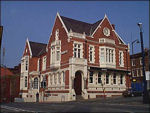 27 October 2008 |
'Bank Statements'
|
 24 October 2008 |
The Potteries Loop Line was a
very short line, which assumed great importance with increasing local
developments. The Loop Line from Etruria via Hanley, Cobridge, Burslem, Tunstall, Pitts Hill, Newchapel & Goldenhill to Kidsgrove Liverpool Rd. and a junction with the Manchester line was the last of the N.S.R.’s major undertakings. |
 21 October 2008 |
The Rev W. Basil Buckland, was a vicar at the Church of St. James in Longton and this is a collection of slides that he took of different people and places in the area during the 1960's' |
 20 October 2008 |
Description and
examples of all the towns and city arms. Before federation all the six towns of The Potteries had and displayed arms but only Burslem received a grant to use arms. In 1912 the new county borough of Stoke-on-Trent was granted its own arms. |
|
19 October 2008 |
The opening of Northwood Park
by the Mayor of Hanley, Alderman T. Hampton, took place on May 23rd,
1907, after a procession from Hanley Town Hall. Although the park was then incomplete the opening was put forward to take place on the day celebrating the jubilee of the Incorporation of the Borough of Hanley. |
|
11 October 2008 |
One of the later of the City parks - Fenton park was opened in 1924 on the site of Broadfield Colliery at Fenton Low, it was extended in 1957. |
 7 October 2008 |
The Queens Gardens in Newcastle-under-Lyme was originally marsh land t was reclaimed and developed for use by the people of the town. |
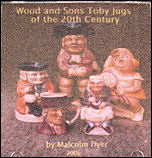 27 September 2008 |
An extract is taken from the collectors guide, Wood and Sons Toby Jugs of the 20th Century which covers the Toby Jugs made by Wood and Sons, H. J. Wood, Tony Wood and Wood Potters of Burslem during the 20th Century. |
 26 September 2008 |
Tunstall cemetery was laid out on part of Tunstall Farm in 1868. |
|
20 September 2008 |
Bentilee is a
suburb and housing estate in Stoke-on-Trent, Staffordshire situated
between Hanley and Longton.
Built in the 1950s, Bentilee was at
that time one of the largest estates in Europe, with around 4,500
properties.
|
 20 September 2008 |
Hanley Cemetery - "Having secured a site (in 1858), the Council offered premiums for the two best designs for chapels, and for laying out the grounds. No less than sixty-five architects, residing in various parts of the country competed, and several designs for the arrangement of the grounds were also sent in." |
 12 September 2008 |
Longton Cemetery - following a competition in 1872 for the design of the lay-out, Longton Cemetery opened in 1877. There is a memorial to the 64 miners who died in the Mossfield Colliery disaster of 1889. |
 8 September 2008 |
Burslem Cemetery opened in 1879 when it was opened it was intended to be a
"a
recreation park, to be used for walking, riding and driving" as well as
a cemetery. Arnold Bennett's ashes are interred here and the cemetery also contains an impressive monument to Thomas Hulme - twice mayor of Burslem. |
|
31 August 2008 |
Continuing the "Lost Roads" walks with
Fred Hughes...... Hulton Abbey - the start of a three part series on the monks of Hulton Abbey and their connection with Rushton Grange. Sir Nigel Gresley's Canal - the last of the series on the three Newcastle-under-Lyme canals
Dalehall - a
'one off' article on Dalehall, Burslem and St. Paul's Church. |
 15 Aug 2008 |
Hulton Abbey to Ruston
Grange This article examines Hulton Abbey, the trackway along Sneyd Street and the monks farmland at Ruston Grange. The Abbey was founded by Henry De Audley in 1219 and consecrated in 1223. Following the dissolution in 1538 the site eventually was lost until 1884; it was located during a chance excavation, later being investigated and published by Charles Lynam who was a local architect. |
 10 Aug 2008 |
The Newcastle-under-Lyme Junction Canal was proposed in 1789 as a third canal, one of its main promoters was Nigel Gresleys' son. The route was planned to be a link canal from the Nigel Gresley Canal to the Newcastle Under Lyme Canal. At the southern end of the Junction Canal a railway inclined plane was planned because the Newcastle Under Lyme Canal was some 60 feet lower than the Junction Canal. |
 8 Aug 2008 |
Dalehall - a district of Burslem, arranged either side of Newcastle
Street. Nowadays Dalehall, although preceding it in antiquity has
been subsumed into the general area known as Middleport. A toll-house and gate was erected in Newport Street at Dale Hall between 1848 and 1851 to cover traffic using Port Vale Wharf. |
 27 July 2008 |
“The canal ran between Lyme Brook and the main A34,” “It was clearly open countryside then with the canal crossing several drawbridges allowing carted transport from Clayton to Penkhull. There was a lot of industrialisation around the 1950’s with brickworks, bakeries and developing retail sites. |
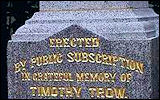 21 July 2008 |
The actions of 21 year-old tram conductor Timothy Trow on April 13th 1894 were certainly above and beyond the call of duty. It was around 4pm that Friday afternoon when the young Stoke man leapt from his footplate and vaulted over a line of iron railings into the murky Newcastle Canal as it flowed along London Road. Four-year old Jane Ridgway had been playing on the towpath when she tumbled in and, thanks to the brave conductor who’d heard her screams, the child was saved. But non-swimmer Timothy lost his life, sucked to the bottom of the foul water. |
|
14 July 2008 |
The heartbeat of Stoke on Trent lies exactly at 53.0045 degrees latitude by 2.1819 longitude crossing precisely above the Civic Centre which in turn sits on top of the dried-up bed of the Stoke to Newcastle Canal. |
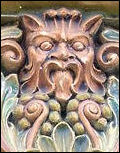 8 July 2008 |
The Green Man in
Stoke-on-Trent A Green Man is a sculpture, drawing, or other representation of a face surrounded by or made from leaves. |
 7 July 2008 |
Ford Hayes Farm
The story of Hugh Bourne has been told often. But there is one part of his
life that is less well-known, and that relates to his birthplace at Ford
Hayes Farm Bucknall where he spent the first 16 years of his life from
1772. |
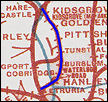 6 July 2008 |
The Potteries Loop Line
was a railway line that served several towns in Stoke-on-Trent. It ran
from the main line at Stoke, through Etruria, Hanley, Burslem, Tunstall
and Goldenhill to re-join the main line at Kidsgrove. |
 1 July 2008 |
"Sing glory! hallelujah!. . .The Lord is with us still; The little cloud's increasing. . .That arose upon Mow Hill." this is the story of the Primitive Methodist Church - the Burslem Wesleyan Circuit Quarterly Meeting, who put Hugh Bourne out of fellowship on 27 June 1808, because of the camp meetings at Mow Cop, had no idea what they had started. |
 30 June 2008 |
“Grove Road is a piece of an arterial semi-circle leaving and rejoining the original Roman road. It begins life as Duke Street as far as the crossroads at Heron Cross. Here it becomes Grove Road until it gets to Mount Pleasant where it changes its name to Whieldon Road. And when it gets to Stoke it becomes Lytton Street,” Steve tells me. “The semi-circular routes is like an ancient D-Road by-passing the Roman Road, or as we named it, King Street.” |
| 23 June 2008 |
 Listed
building section completely revised with thumbnail picture index. Listed
building section completely revised with thumbnail picture index. |
 23 June 2008 |
Normacot Road Hardly any traffic moves along Normacot Road or the two parallel roads, Uttoxeter Road and Lower Spring Road. They all terminate as dead-ends at the A50 hectic Intersection. |
 22 June 2008 |
Grove Road, Heron Cross, Great Fenton
It is not at all fanciful to speculate that a number of famous and early potters journeyed along the track which is today known as Whieldons Road, Grove Road and Duke Street. |
 15 June 2008 |
Fowlea Bank - "it’s like falling
off the edge of the world" One of the longest and busiest roads in Stoke on Trent is Etruria Road. It stretches from the Victoria Theatre in Basford to the Grand Hotel in Hanley. But all that’s left of the original road is now nothing more than a tiny concealed lane that runs beside Basford’s Queen’s Hotel. |
 15 June 2008 |
Normacot
Road, Longton Normacot Road was once an important thoroughfare from Normacot to Longton Town. Many of the houses and works were demolished between the 1930's and the 1970's and the opening of the A50 road in 1997 meant that the end of Normacot Road was sealed off - so now it is a road to nowhere. |
| 9 June 2008 |
The Ash Hall bridle path
was a strategic location in the mid-19th century because of its carriage
of coal from Hanley Hayes Colliery to the Hanley-Cheadle Turnpike Road, -
Early coalmining on Ash Bank is reflected in the names of the fields such
as Coal Pit Field and Slack Pit Field |
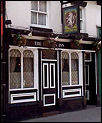 8 June 2008 |
The end of an era? There is no single reason for the decline of the local pub, there are many contributory factors: loss and erosion of the communities that underpin the trade of the local; decline of industry and the spread of unemployment; greedy breweries and pub company landlords screwing their tenants to the point where they cannot make a living and move on; the rise of the ‘pub chain’ |
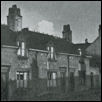 5 June 2008 |
Lord Street (Etruria Old Road) Josiah Wedgwood set an example by building houses for his workers. There may have been an element of philanthropy here, but it was also a necessity if skilled men were to be enticed to Etruria from Burslem. The terraced houses stretched along both sides of the main road from Etruria to Basford Bank. |
|
27 May 2008 |
Although now a largely desolated street at one time it was a busy place with a large number of public buildings.......The Free Library, the North Staffs. Technical and Art Museum, the Government School of Art, the Potteries Mechanics’ Institution, and the Theatre Royal were all situated in Pall Mall.
|
| 19 May 2008 |
When the Longton society bought Spratslade Farm it had to accommodate an
ancient bridle path
leading from Longton to Trentham. The streets were designed in geometric
blocks and the bridle path was included as a pedestrian way between the
old Belgrave Road and the new Ricardo Street.
|
| 12 May 2008 |
Ricardo Street. There are some places that draw you back like a bee to a hive or a bird to its nest; a honeymoon spot say, or a childhood holiday beach. For me such a place is Dresden. Yes, I do mean Dresden Stoke on Trent, that sprawl of streets and houses crammed between the A50 and Queen’s Park. But my, what streets, what houses! |
 5 May 2008 |
Bournes Bank Once part of a packhorse road which ran from Hanley through onto Church Lawton. Bournes Bank was originally called Church Street and was the main path down to St. John's Church and then on to Hanley. Many pottery and related industry buildings and businesses thrived on Bournes Bank. A school, an ice skating rink and two cinemas found their home on this unassuming road. |
| 17 April 2008 | |
| 15 April 2008 |
1763 - The potters petitioned Parliament to build
turnpike roads,
Wedgwood told them that the roads were "in very bad condition,
narrow in some parts, and in the Winter Season impassable in many
places". Parliament granted their Bill and turnpikes were
constructed. |
| 13 April 2008 |
new
summary page for Burslem -
the "mother of the potteries" seated
between Hanley and Tunstall. |
| 12 April 2008 |
Church Lawton - home of the Lawton family and Hall. The
Trent and Mersey canal and the Macclesfield canal junction is located nearby at Red Bull. |
 10 April 2008 |
Continuation of the walk along the 'old roads' of the city - this week .. James Brindley canal engineer |
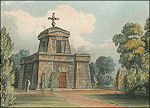 3 April 2008 |
continuation of Pevsner's architectural commentary on the Potteries towns... Stoke, Tunstall, Stoke-on-Trent Villages and Trentham Park |
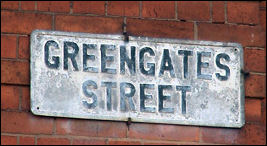 31 March 2008 |
Continuation of the walk along the 'old roads' of the city - this week ... Greengates and the Adams family - potters of Tunstall. |
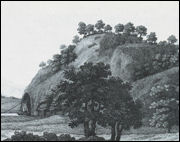 30 March 2008 |
There are two
Harecastle Tunnels, one of which is still in use today. The earlier
of the tunnels, built by Brindley, is now closed and disused. Yet
the Telford tunnel is used daily by canal boats coming to and from
the Potteries. Brindley's tunnel didn't have room for a towpath - the barges were legged through the tunnel and the horses taken over the hill along Boathorse Road. |
| 24 March 2008 |
Continuation of the walk along the 'old roads' of the city - this week .. Ladywell, Tunstall - 'a town of courts, wells and windmills'
|
| 23 March 2008 |
Members of the
Adams family were Potters as
early as 1447. They rose to eminence in the trade in the eighteenth
century as Master Potters in Burslem and other parts of the Potteries,
working constantly side by side with the Tofts, Astburys, Daniels,
Wedgwoods. |
| 20 March 2008 |
Continuation of the walk along the 'old
roads' of the city - this week ..The young
surgeon, Dr Thomas Oliver, cut a pathetic figure as he was led to the
gallows at Stafford Gaol in 1797 for shooting dead John Wood of
Brownhills. |
|
14 March 2008 |
Tunstall,
including its environs, is the pleasantest village in the pottery. It
stands on high ground and commands pleasing prospects. |
| 10 March 2008 |
Continuation of the walk along the 'old
roads' of the city - this week ...
Trubshaw Cross 'a Major gateway provides a glimpse into cities past'
|
| 8 March 2008 |
"Brownhills
is situate upon the main Turnpike Road (from Burslem to Lawton,)
at the junction of the Branch which comes from Newcastle through Longport;
and is at nearly equal distances from the market-places of Tunstall and
Burslem; which are rather more than a mile apart. It is within the
township of Burslem, which extends, north-westward, as far as an inn
called High gate, close up to the town of Tunstall." |
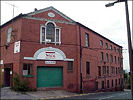 4 March 2008 |
‘Relics’ One of the most historically significant routes in the Potteries is Westport Road in Burslem, which links the Mother Town with Brownhills, just south of Tunstall, the route once being busy with export wagons en route to Liverpool (and on to the rest of the world) and the North. |
| 3 March 2008 | Continuation of the walk along the 'old roads' of the city - this week ..... Brad-Wall - a house on the western side of a large wood overlooking Tunstall and Burslem. |
 2 March 2008 |
Trubshaw Cross is the upper part of Longport, situated on the junction of Newcastle Street and Davenport Road - it was an important point on the packhorse lanes from Newcastle-under-Lyme to Burslem and Tunstall. |
| 29 February 2008 |
Continuation of the walk along the 'old
roads' of the city - this week
Dimsdale and the continuation of
the old Roman road |
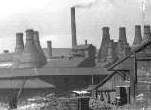 27 February 2008 |
Experts calculate that in the heyday there were up to 4,000 bottle kilns with as many as 2,000 still standing in the 1950's. The Clean Air Act sounded the death-knell for the smoky, coal fired oven. See photos of the 47 kilns still standing today - all are listed buildings
|
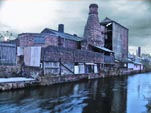 24 February 2008 |
Chris Oldham - photographic artist |
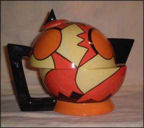 18 February 2008 |
Cobridge - the Victorian suburb on route to Burslem A 'walk' around the old streets of Burslem - 'Packhorse Lane - the lifeline of the Potteries' |
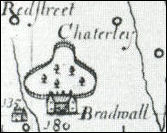 17 February 2008 |
Bradwell - the Hall, the wood, the tilery and the Eler brothers |
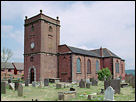 16 February 2008 |
'The
Unknown Legends' Norton-in-the-Moors is where the city meets the moors, and has its roots in coal being home to Norton Colliery and a neighbour of Chatterley Whitfield. |
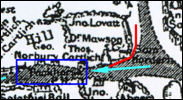 10 February 2008 |
Significant packhorse lanes and later turnpike roads existed in Burslem - these were essential for the transport of raw materials into the town and the export of finished ware via Winsford and the River Weaver to the port of Liverpool. |
 9 February 2008 |
Photos of the remaining
Victorian Post Boxes in
Stoke-on-Trent (if you know of any others then please let me know) |
| 7 February 2008 |
- continuation of the 'walk' around the old
roads of Stoke-on-Trent .......
Hanley Lower Green |
Etruria |
Cobridge | |
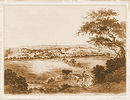 20 January 2008 |
Etruria has been created, nurtured and grown by men of local, national and international fame, without whom the story would never have been complete..... |
 16 January 2008 |
20 Snow Hill - The apartments are where Clarice Cliff lived from 1936 until she married her boss Colley Shorter in 1940. |
| 15 January 2008
|
a "walk" around Station Road, the railway and North Stafford Hotel |
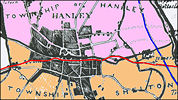 15 January 2008 |
In the late
seventeenth century, Hanley consisted of two small hamlets known as Hanley
Upper Green (or just Upper Green) and Hanley Lower Green (or just Lower
Green). The centre of Hanley preserves the irregular layout of the late-18th-century village and in 1960 Mr. J. W. Plant the City Reconstruction Officer described it as 'an archipelago of island sites'. |
 12 January 2008 |
'Libraries gave us power' - each of Stoke-on-Trent’s six towns is blessed with its own public library, and each one is a major architectural statement. |
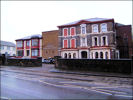 10 January 2008 |
The history of part of Shelton - Stoke Road, Howard Place and Snow Hill |
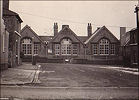 5 January 2008 |
Allan Chell's photos of the Granville Street / Waterloo Road area of Cobridge in the 1950's |
| 3 January 2008 | a "walk" around
Lower Lane, Fenton |
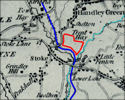 3 January 2008 |
Complete section on Winton Square, its history and the listed buildings there. |
| 1 January 2008 | Entry on
Winton's Wood, Shelton - its history and current day
importance |